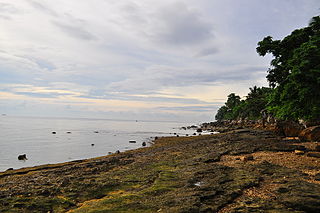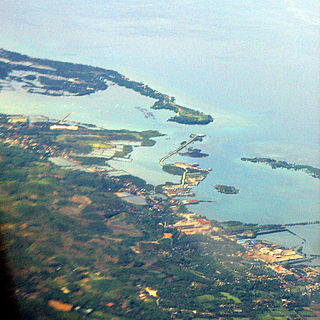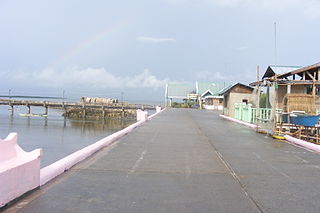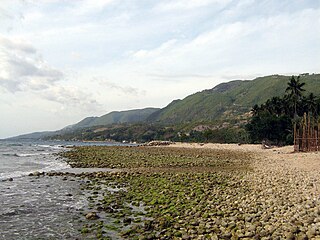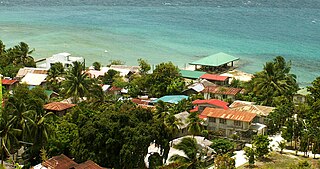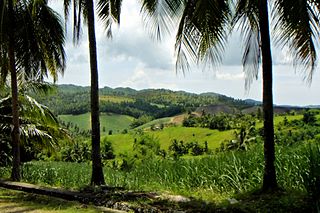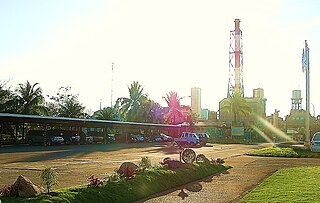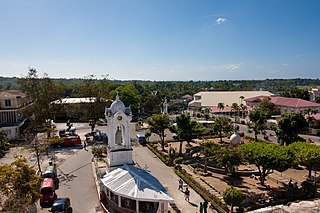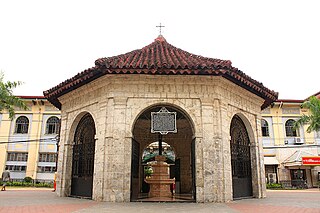Mandaue | |
|---|---|
Mandaue viewed from the Tops Lookout Oakridge Business Park Parkmall | |
Nicknames:
| |
| Anthem: Mandaue ang Dakbayan English: Mandaue, the City | |
 Map of Cebu with Mandaue highlighted | |
Location within the Philippines | |
| Coordinates: 10°20′N123°56′E / 10.33°N 123.93°E | |
| Country | Philippines |
| Region | Central Visayas |
| Province | Cebu (highly urbanized city under supervision of the provincial government of Cebu) |
| District | Lone district |
| Pueblo | circa 1656 |
| Municipality Status | 1901 |
| Cityhood | August 30, 1969 |
| Highly urbanized city | February 15, 1991 |
| Barangays | 27 (see Barangays) |
| Government | |
| • Type | Sangguniang Panlungsod |
| • Mayor | Jonas C. Cortes (1CEBU) [lower-alpha 1] Glenn O. Bercede (1CEBU; acting, since August 13, 2024) |
| • Vice Mayor | Nerissa Corazon C. Soon-Ruiz (Lakas-CMD; acting) |
| • Representative | Emmarie M. Ouano-Dizon (Lakas-CMD) |
| • City Council | Members |
| • Electorate | 234,581 voters (2022) |
| Area | |
| • Total | 34.87 km2 (13.46 sq mi) |
| Elevation | 22 m (72 ft) |
| Highest elevation | 984 m (3,228 ft) |
| Lowest elevation | 0 m (0 ft) |
| Population (2020 census) [4] | |
| • Total | 364,116 |
| • Density | 10,000/km2 (27,000/sq mi) |
| • Households | 103,345 |
| Economy | |
| • Gross domestic product (GDP) | ₱109.6 billion (2022) [5] $1.936 billion (2022) [6] |
| • Income class | 1st city income class |
| • Poverty incidence | 10.40 |
| • Revenue | ₱ 2,781 million (2020) |
| • Assets | ₱ 32,571 million (2020) |
| • Expenditure | ₱ 2,668 million (2020) |
| • Liabilities | ₱ 1,266 million (2020) |
| Service provider | |
| • Electricity | Visayan Electric Company (VECO) |
| Time zone | UTC+8 (PST) |
| ZIP code | 6014 |
| PSGC | |
| IDD : area code | +63 (0)32 |
| Native languages | Cebuano |
| Website | www |
Mandaue, officially the City of Mandaue (Cebuano : Dakbayan sa Mandaue), is a 1st class highly urbanized city in the Central Visayas region of the Philippines. According to the 2020 census, it has a population of 364,116 people. [4]
Contents
- History
- Cityhood
- Geography
- Climate
- Barangays
- Demographics
- Economy
- Tourism
- Fiestas
- Cuisine
- Transportation
- Education
- Media
- Television
- Radio
- Sister cities
- Local
- International
- Notes
- References
- Sources
- External links
It is geographically located on the central-eastern coastal region of Cebu by Philippine Statistics Authority but administratively independent from the province. Its southeast coast borders Mactan Island where Lapu-Lapu City is located and is connected to the island via two bridges: the Mactan-Mandaue Bridge and Marcelo Fernan Bridge. Mandaue is bounded on the north by the town of Consolacion, to the east by the Camotes Sea, and to the west and south by Cebu City.
It is one of three highly urbanized cities on Cebu island and forms a part of the Cebu Metropolitan area [8] and was part of the sixth district of Cebu joined with the municipalities of Consolacion and Cordova - it was qualified for a lone district since 1991. On April 5, 2019, the city became a lone legislative district. [9] As of June 30, 2022, Mandaue had its first representation in the 19th Congress of the Philippines.
























